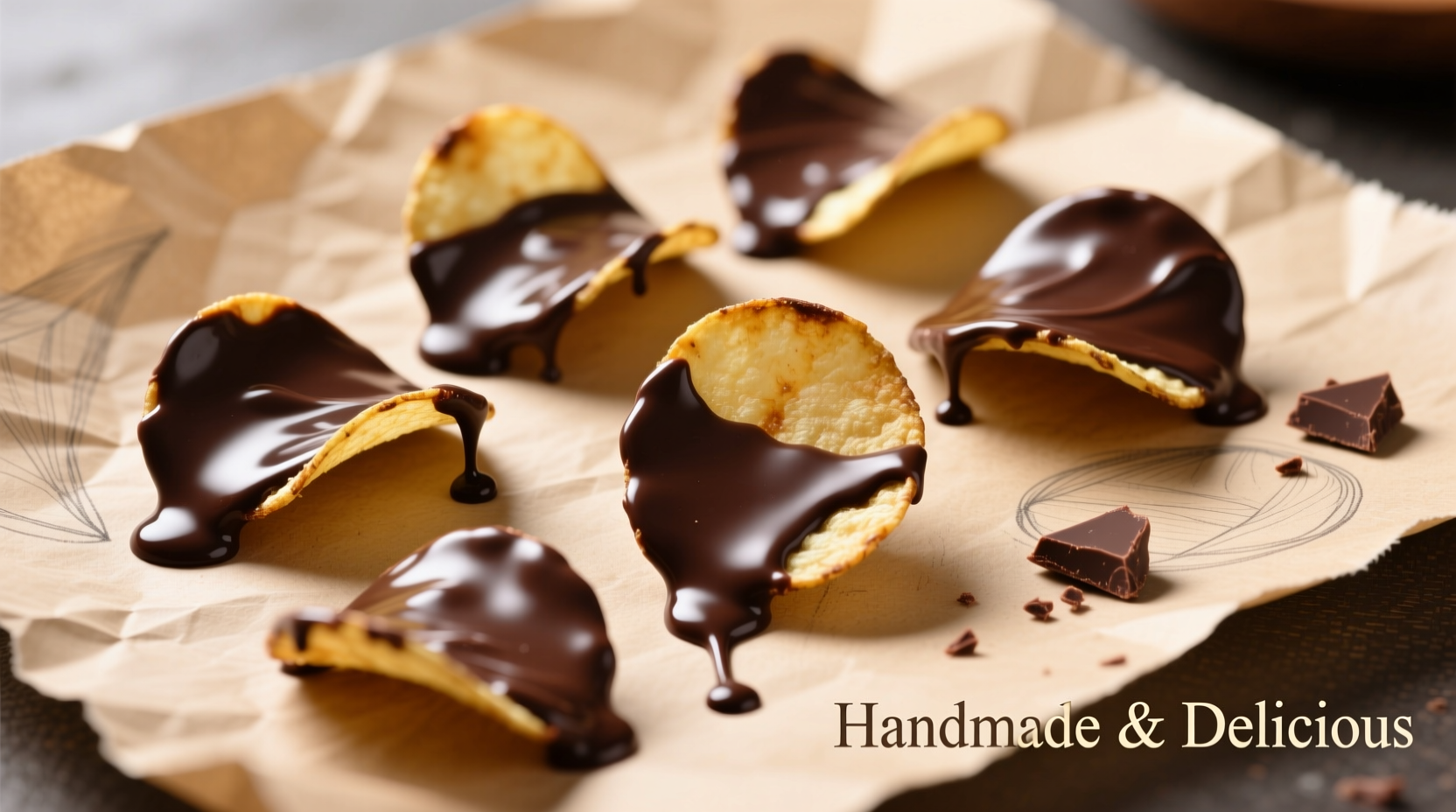Ever wondered why chocolate covered potato chips have become such a talked-about snack sensation? This unexpected pairing of savory and sweet isn't just a random food experiment—it's a carefully crafted culinary experience that leverages fundamental principles of flavor science. The magic happens when the salt from the potato chips enhances the chocolate's natural sweetness while the chocolate's richness complements the potato's earthy notes, creating a flavor profile greater than the sum of its parts.
The Evolution of Sweet-Salty Snack Innovation
While chocolate-covered snacks have existed for decades, the specific combination with potato chips emerged relatively recently in the snack food timeline. Traditional chocolate-covered pretzels and nuts paved the way for more adventurous pairings. The first commercial chocolate covered potato chips appeared around 2010, with small-batch artisanal producers experimenting with the concept before larger snack companies took notice.
| Time Period | Key Developments | Market Response |
|---|---|---|
| Pre-2010 | Chocolate-covered pretzels and nuts dominate sweet-salty market | Established niche market |
| 2010-2015 | Artisanal producers experiment with chocolate covered potato chips | Positive local response, limited availability |
| 2016-2019 | Major snack brands introduce commercial versions | Rapid growth in specialty food sections |
| 2020-Present | Expanded flavor varieties and mainstream grocery availability | Established as permanent snack category |
Why This Combination Works: The Science Behind the Flavor
Food scientists at Cornell University's Food and Brand Lab have studied how salt enhances our perception of sweetness, explaining why this pairing works so well. The sodium ions in the potato chips temporarily suppress bitter receptors on our tongues while amplifying sweet receptors, making the chocolate taste richer and more complex. This biological response creates what flavor experts call "flavor layering"—where each component enhances the other without overwhelming the palate.
Texture plays an equally important role in the experience. Unlike chocolate-covered nuts or pretzels, potato chips offer an ultra-thin, shatteringly crisp base that provides maximum crunch with minimal resistance. When properly executed, the chocolate coating should be thin enough to maintain the chip's structural integrity while delivering a smooth, melt-in-your-mouth quality.
Finding Quality Chocolate Covered Potato Chips
Not all chocolate covered potato chips deliver the same experience. The best versions use premium ingredients and careful production techniques. When shopping, look for these quality indicators:
- Thin, consistent chocolate coating (shouldn't overwhelm the chip)
- High-quality chocolate (look for cocoa content between 55-70%)
- Minimal additional ingredients (avoid artificial flavors or excessive sugar)
- Properly sealed packaging to maintain freshness and crunch
Major grocery chains now carry several options in their specialty snack sections, while online retailers offer artisanal varieties with unique flavor infusions. For those interested in the nutritional profile, a typical one-ounce serving contains approximately 150-170 calories, with 8-10g of fat and 12-15g of carbohydrates.

Creating Perfect Chocolate Covered Potato Chips at Home
Making chocolate covered potato chips at home is surprisingly simple and allows for complete customization. Follow these professional techniques for restaurant-quality results:
- Start with high-quality plain potato chips—thin-cut varieties work best
- Melt chocolate using a double boiler or microwave in 30-second intervals
- Dip chips halfway using a fork, allowing excess chocolate to drip off
- Place on parchment paper and chill for 15-20 minutes until set
- Store in an airtight container at room temperature
For best results, use chocolate with 2-3% cocoa butter content and avoid adding oil to the melted chocolate, which can cause blooming. Professional chefs recommend working with small batches to maintain consistent temperature and prevent the chocolate from seizing.
When Chocolate Covered Potato Chips Shine (and When They Don't)
This snack works exceptionally well in specific contexts but has limitations. Food pairing experts note that chocolate covered potato chips excel as:
- An unexpected addition to dessert charcuterie boards
- A sophisticated alternative to traditional chocolate desserts
- A conversation-starting party snack
- A palate cleanser between wine tasting courses
However, they're less suitable as:
- An everyday snack due to higher cost per serving
- A substitute for traditional potato chips in recipes
- A snack for those with specific dietary restrictions (check ingredients)
- A replacement for standard chocolate in baking applications
Popular Variations Worth Trying
Culinary innovators have expanded beyond the basic chocolate-potato combination. Some noteworthy variations include:
- Dark chocolate with sea salt flakes for enhanced flavor contrast
- Milk chocolate with crushed toffee bits for added texture
- White chocolate with freeze-dried raspberry powder
- Spiced dark chocolate with cayenne pepper for heat contrast
- Matcha white chocolate for an earthy twist
When experimenting with homemade versions, start with small batches to test flavor combinations before committing to larger quantities. Remember that the best variations enhance rather than mask the fundamental potato-chocolate relationship.
Troubleshooting Common Issues
Even experienced makers encounter challenges with chocolate covered potato chips. Here's how to solve frequent problems:
- Chocolate won't stick: Ensure chips are completely dry and oil-free before dipping
- Chips become soggy: Use tempered chocolate or add 1-2% coconut oil to stabilize
- Chocolate blooms (white streaks): Maintain consistent temperature during setting
- Uneven coating: Dip quickly and rotate chips to distribute chocolate evenly
- Chips break during dipping: Use thicker-cut chips or handle with care











 浙公网安备
33010002000092号
浙公网安备
33010002000092号 浙B2-20120091-4
浙B2-20120091-4